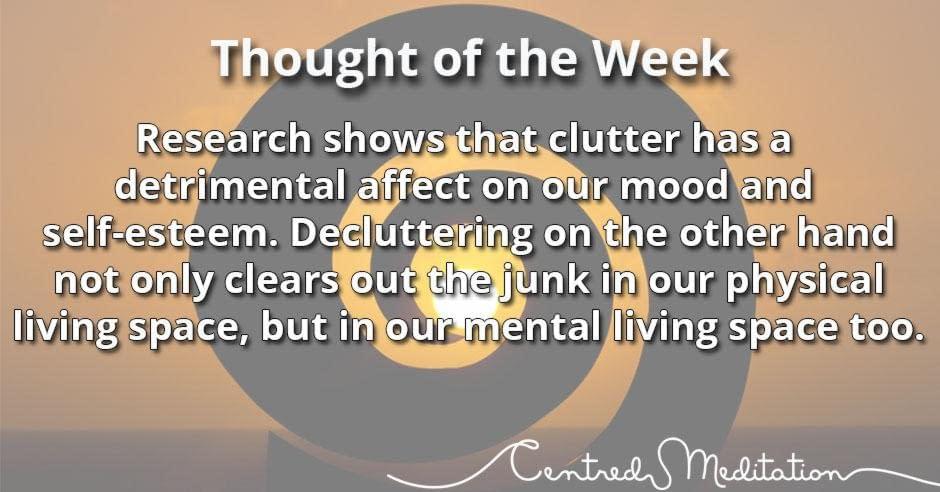I (Nikki) spent most of Sunday de-cluttering. It’s something I have wanted to do for months now, and so I finally made time to get stuck into my cupboards and drawers in my old childhood bedroom and sort through all my ‘stuff’. From old birthday cards to journals to photographs to school projects – I came to realise I was/am a bit of a hoarder!
It got us thinking…why do most of us seem to have such an aversion to de-cluttering? Experts say hoarding may be a way to avoid change or be a form of procrastination. We suspect it’s also a mixture of being too emotionally attached to our possessions, feeling guilty about letting go of objects with sentimental value, being worried we might someday/one-day need it, and/or simply not having the energy to tackle the de-cluttering job.
Well apparently, it’s well worth conquering our decluttering paralysis. You see, our home can be seen as an extension of the self. It literally plays witness to our entire lives, and becomes a showcase of the places we have been, the people we have known, and the experiences we have had. Yet, there does come a saturation point whereby our memorable keepsakes transform into excess clutter, ultimately clogging our space and undermining our wellbeing. Researchers at UCLA’s Center on Everyday Lives and Families found that clutter has a profound affect on our mood and self-esteem. In fact, they saw a link between high cortisol (stress hormone) levels in female home owners and a high density of household objects. Moreover, a study from ‘The Journal of Environmental Psychology’ concluded that “when clutter becomes excessive, it can threaten to physically and psychologically entrap a person in dysfunctional home environments which contribute to personal distress and feelings of displacement and alienation.” Check out this infographic on how clutter is harming you here.
Decluttering is all about getting rid of those items which we no longer need and/or use. It’s also about letting go of the past, enjoying the present, and paving way for the future. Decluttering our home not only makes our physical space feel less cluttered (our home), but it at the same time helps to clear our mental space too (our mind). There is less stuff to take care of, less running around trying to find things, and more time to spend on what is really important to us.
So how do we go about doing it? Brooke, from slow your home acknowledges that the de-cluttering process can be overwhelming. So she has this piece of advice for us: “Start small. Give yourself 15 minutes and choose one space to declutter each day”.
Here is her never-fail decluttering technique (accessed here):
- Decide on a single surface to declutter. Once you begin, do not move on to another until this one is completely clutter-free and (preferably) well organised.
- Establish an area as your work space. You need a clear, flat work surface for sorting and organising.
- Grab four boxes or bags.
- Donate Box – for anything in good condition that can be donated to charity, given as hand-me-downs to friends or family, or sold online.
- Throw Away Box – anything not in good, useable condition.
- Recycle Box – items that can be recycled.
- Holding Box (optional) – keep any items you’re unsure about. Put these items in storage for six months and then decide (based on whether you missed or needed the items) if you will keep or donate the contents.
- Remove everything from the space you are decluttering. Take everything out of the drawer/shelf/cupboard you are working on and place it all on your newly cleared work surface, leaving the space completely empty. Clean it with a damp cloth.
- Pick up each item individually and decide if you will keep it. The amount of time you spend on the decision will depend on what it is and how much is has meant to you in the past. If you’re unsure, ask yourself these questions:
- Do I need this?
- Do I want this?
- Do I use this? (Or have I used it in the past year?)
- Do I love this?
- Is it beautiful?
- Is it meaningful?
- Work through each item, placing it in the appropriate box, or back on the now-decluttered clean surface.
- Box up the items for donation and recycle/throw away the things you can’t give away.
- Marvel at the beautiful clutter-free surface you’ve just created.


